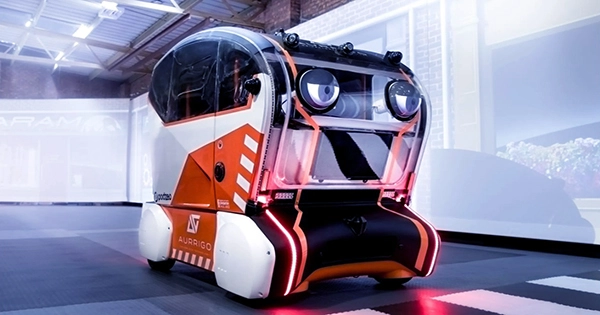How well self-driving cars will respond to pedestrians is a topic that everyone is asking as they become more prevalent. With human drivers, it’s generally clear that they won’t just run you over at a crosswalk (unless it’s a BMW, of course). however without one? Whether the computer has identified you as a barrier is seldom easy to know.
Worry no more, however, since some Japanese experts have invented the silliest fix that might actually work: enormous, comical googly eyes.
These blinking eyes, which would be strapped to the front of the car like a modernized Brum, would let pedestrians know when they have been detected by the vehicle’s onboard detecting technologies, giving them a sense of anthropomorphic comfort and allowing them to cross the street peacefully.
“If the car is not looking at the pedestrian, it is likely that it is not paying attention to them. As a result, pedestrians may determine when it is safe to cross the street, potentially preventing traffic accidents, according to the study’s authors.
The idea is straightforward enough, but it might provide a crucial safety feature that could aid human adaptation to our self-driving overlords.
For the investigation, the researchers used a golf buggy with tinted front windows to give the impression that nobody was operating it. Large remote-controlled eyeballs were then added to the front, and a virtual reality pedestrian crossing scene was created so that the test subjects wouldn’t actually be ran over.
When the buggy approached—with or without eyes—nine men and nine women were instructed to cross the street. They found that having eyes made the crossing scenario better, and people passed more safely and easily when the big googlies were watching them.
Although several participants in both groups remarked they didn’t enjoy how the large eyes looked, it is understandable that they didn’t like how they made them feel more “secure” when rating the threat of the situation. The eyes, however, performed differently in the two: in men, they served as a danger signal, discouraging them from crossing if doing so would be risky; in women, they inspired confidence and gave them a sense of security while doing so.
“In this study, the male participants frequently chose to cross the road in a risky situation (i.e., when the car was not stopping), but these mistakes were lessened by the cart’s eye stare. But when it came to safe scenarios for them (such as deciding to cross when the car was about to stop), there wasn’t much of a difference, according to one of the authors, Project Lecturer Chia-Ming Chang.
“On the other hand, the eye look of the cart helped the female participants make less error-prone decisions (e.g., deciding not to cross when the car was intended to stop). For them, the dangerous circumstances were not that different.
Even while the research has not yet been peer-reviewed, it does raise some intriguing issues about the potential technology that could be used to warn pedestrians of danger. Who knows, the upcoming Tesla vehicle may feature add-on googly eyes.
International Conference on Automotive User Interfaces and Interactive Vehicular Applications published the study.
















